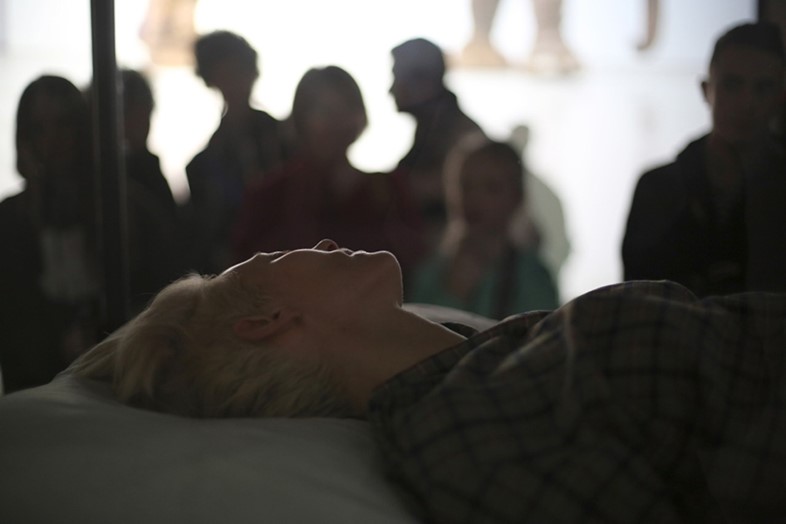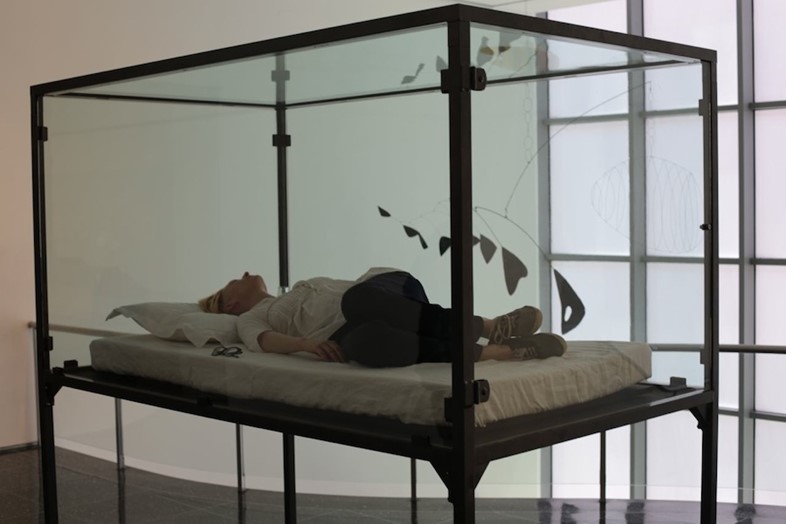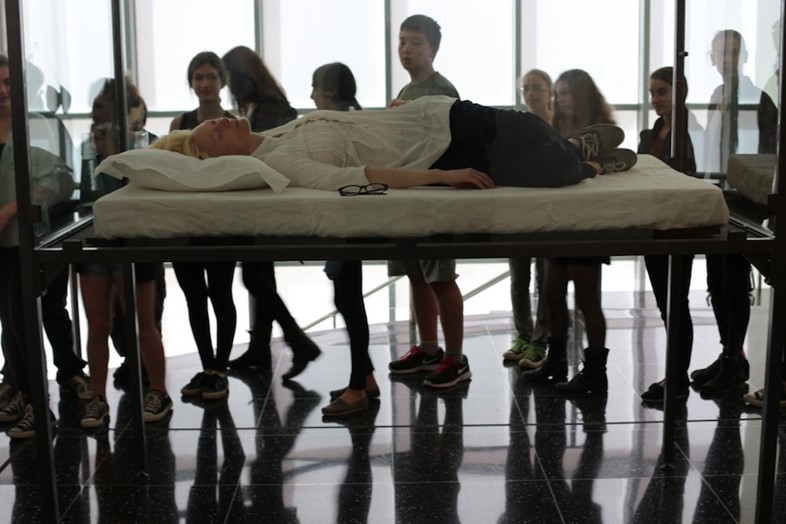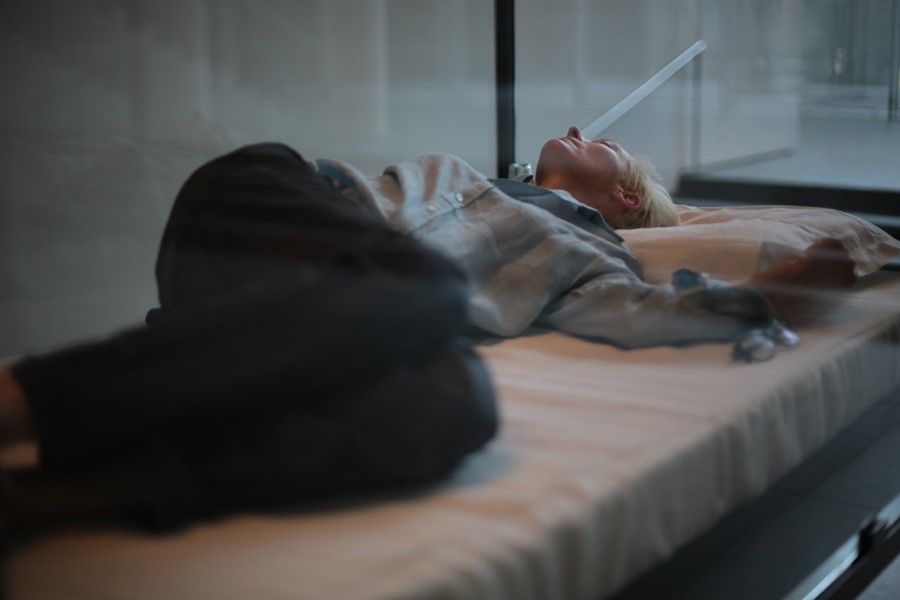When visiting MoMa, one might chance upon Tilda Swinton asleep in a glass vitrine. In the past few weeks she has slept in the museum’s main lobby, Rodin's monumental Balzác watching over her, in the half-light of Douglas Gordon's video installation
Who? Tilda Swinton – as living art. When visiting MoMa, one might chance upon her asleep in a glass vitrine. In the past few weeks Swinton has slept in the museum’s main lobby, Rodin's monumental Balzác watching over her, in the half-light of Douglas Gordon's video installation "Play Dead" and on the Bauhaus staircase next to a Calder mobile. She lies bare-faced, in old, indistinct clothes and sneakers with clumps of mud stuck to the soles.
What? A gentle refusal of explanation and the element of surprise is integral to the piece. There is no schedule for the random appearances, no artist's or museum statement besides the simple label on the wall nearby: "Tilda Swinton. Scottish, born 1960. The Maybe 1995/2013. Living artist, glass, steel, mattress, pillow, linen, water and spectacles." It is an open question, a proposal, a treasure hunt. The title is perhaps the main clue. Yet if we are to be investigators in this mystery and look hard enough we may find some other leads.
Whilst Swinton has never discussed her experience of being inside the vitrine, she has spoken about the conception of the piece a number of times. In the book Perform Repeat Record, by Amelia Jones and Adrian Heathfield there is an entire chapter dedicated to The Maybe. In the introduction Jones states that “ The iconic image of Swinton in the glass case has come to represent a signature moment in the exploration of the links between the “live” (performance art) and the “death” of the gallery space (its tendency to freeze in time and space that which is displayed there)."
"The performance can be read as a 'memento mori' – a performative monument to fragility, to our mortality and to collective mourning"
Later, an email from Swinton to the author of the book provides some further insight. "I asked myself to propose a gesture, a hybrid between that essence which I value most in live performance – namely, that kinetic experience of human beings all (wholly – as in, every part of them) present together in the same space at the same time and in the thrall of time and the unexpected – with that essence which I value most in cinematic performance – namely, the possibility of the scrutiny by the viewer of the “unwatched” who cannot “watch” back.[…]” Swinton cites further inspirations. Among them are powerful childhood memories of pretending to be asleep, the archetypal image of the sleeping woman in myths and fairy tales, a sensitivity to the predicament of countless homeless people who seem to be treated by society as if, sleeping rough, they were sealed away – invisible – behind glass and the dominance of the dead in glass boxes displayed for the glory of religion and art – exemplified by both Christian and Communist reliquaries but also Damien Hirst's pickled carcasses. Swinton presents a present, living human being alongside these images of passivity, but as both subject and object – and author/artist. The most commonly asked question by spectators of The Maybe – now, as eighteen years ago – is 'Is it real?'
Why? Or rather, perhaps, Why now? The Maybe first premiered at the Serpentine Gallery in 1995 shortly after Swinton’s dearest friend, collaborator over nine years and seven films and provider of what she has referred to as her then "day job", Derek Jarman, died of AIDS. Swinton has said that Jarman's death was the first and foremost reason for the generation of The Maybe. The performance can be read as a "memento mori" – a performative monument to fragility, to our mortality and to collective mourning. This time around, it is probably more than a coincidence that the Maybe is "remade" a few months after Tilda's mother died, in late 2012.
Much has changed since 1995, including Swinton’s public profile; her fame now as much a material of the piece as the metal and glass that surrounds her. The speed and dissemination of imagery and commentary across social media and the phenomenology of "trending" mean that a lot more people are having a secondhand, mediated experience of the performance – a performance that is built around the notion of the modesty of shared – unmediated – living presence. Whether this re-performance is happening despite today's permeation of social media, because of it or as a critique of it remains an open question. A never-ending maybe.
Text by Caroline Lever



